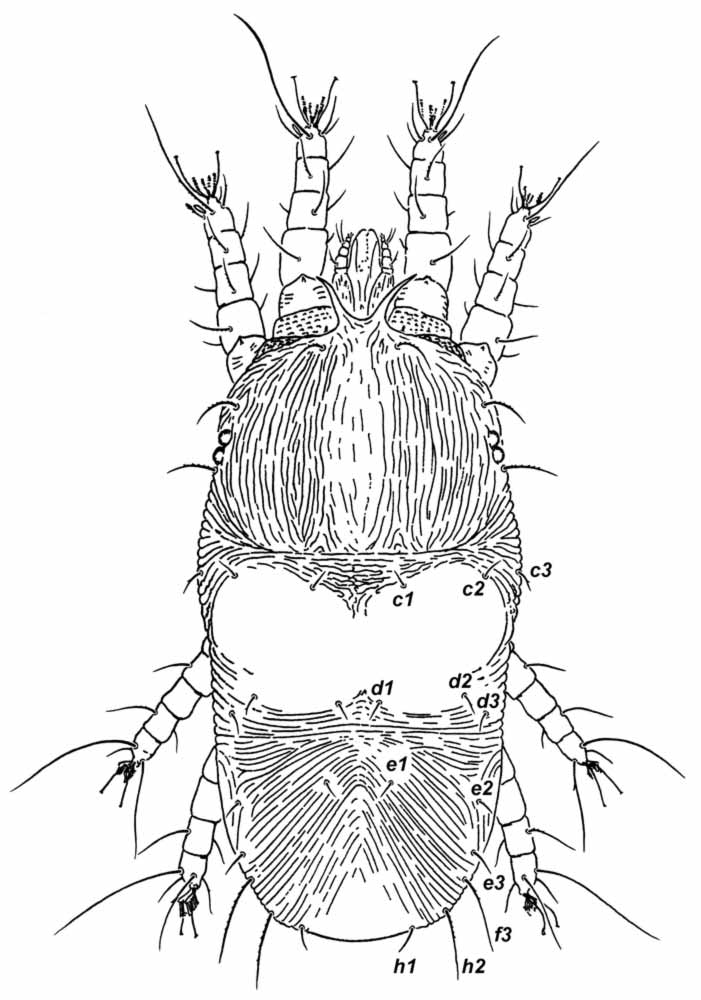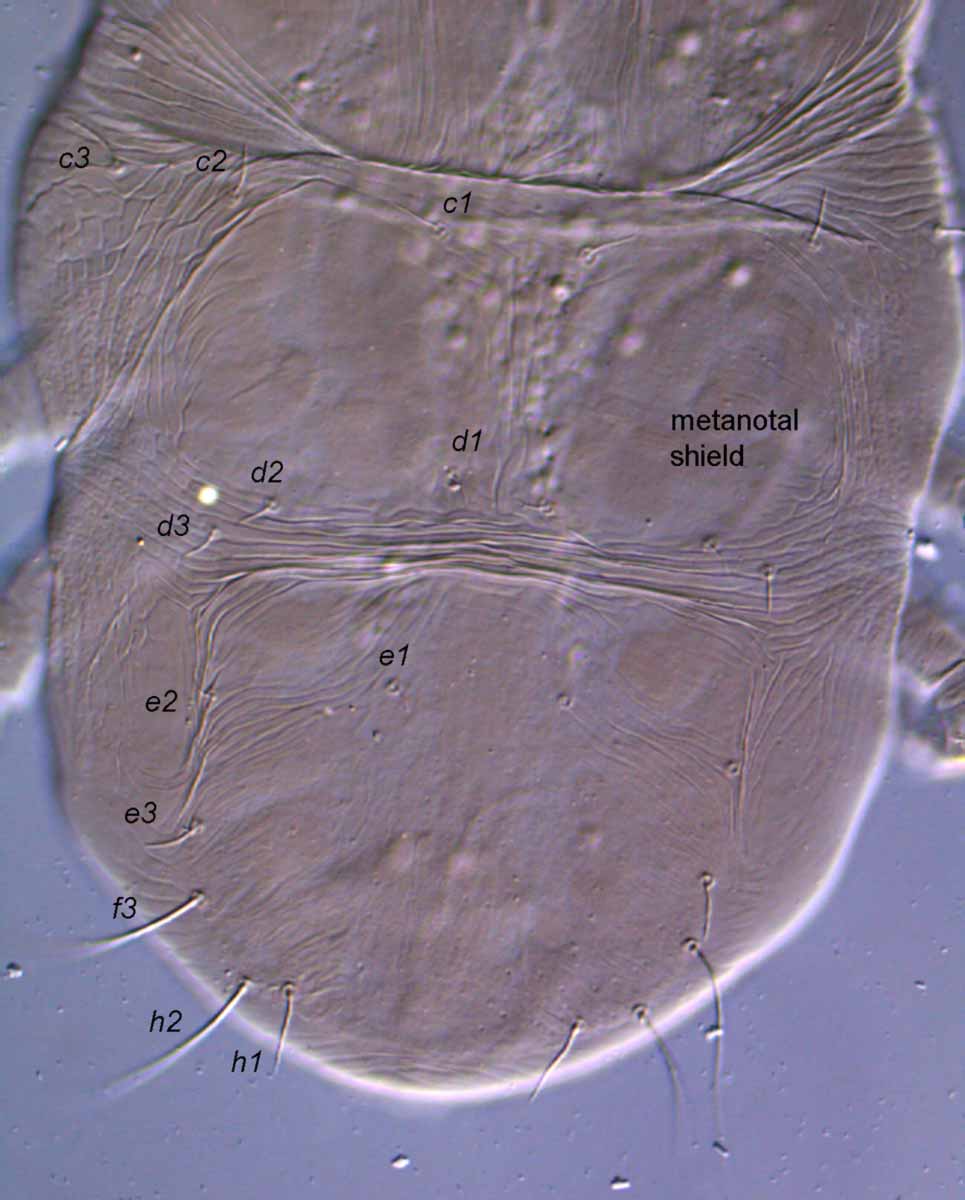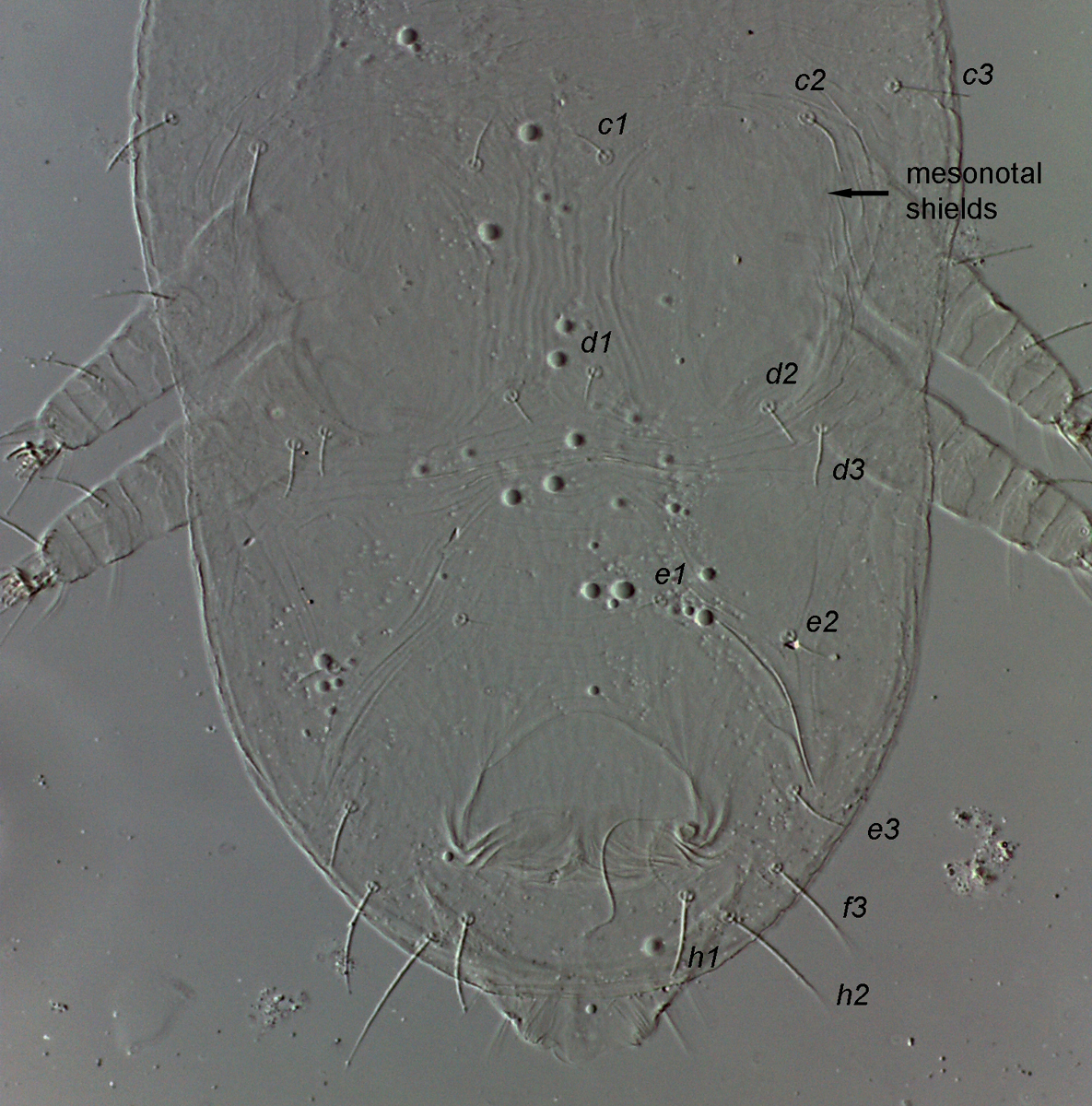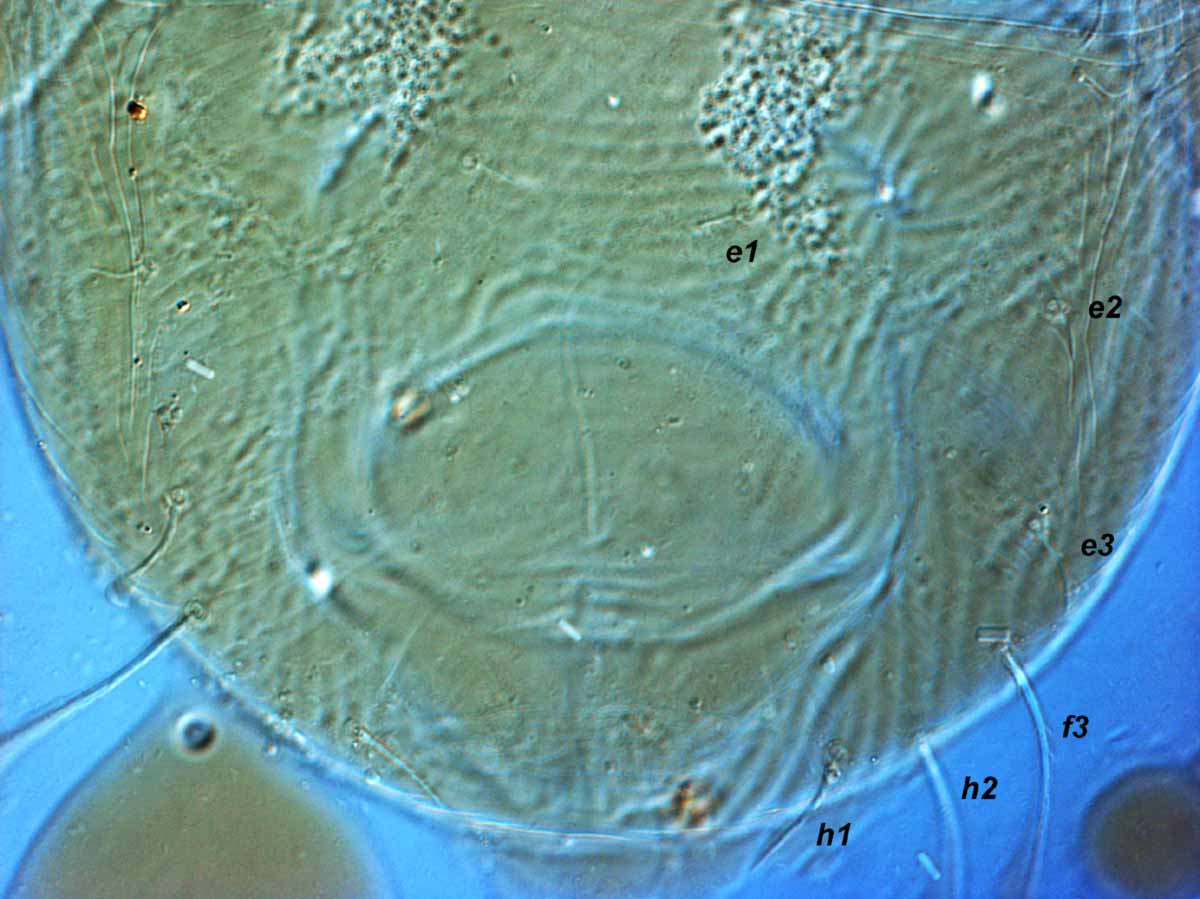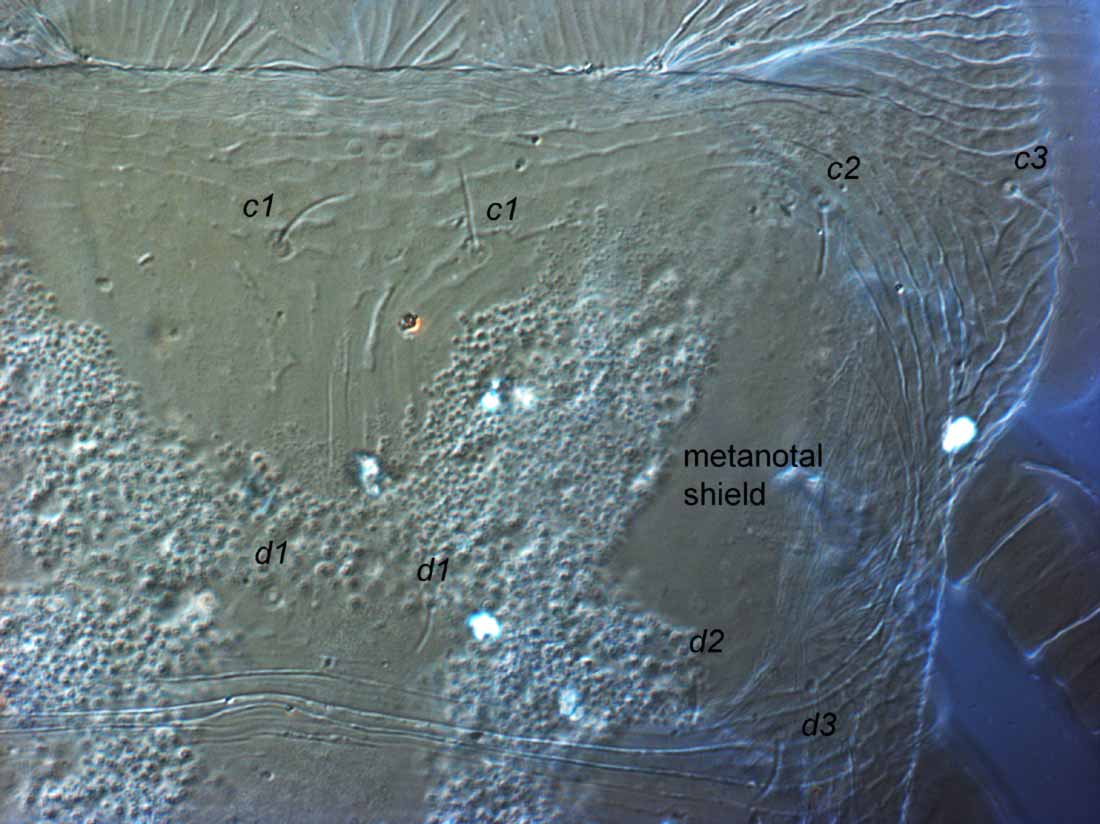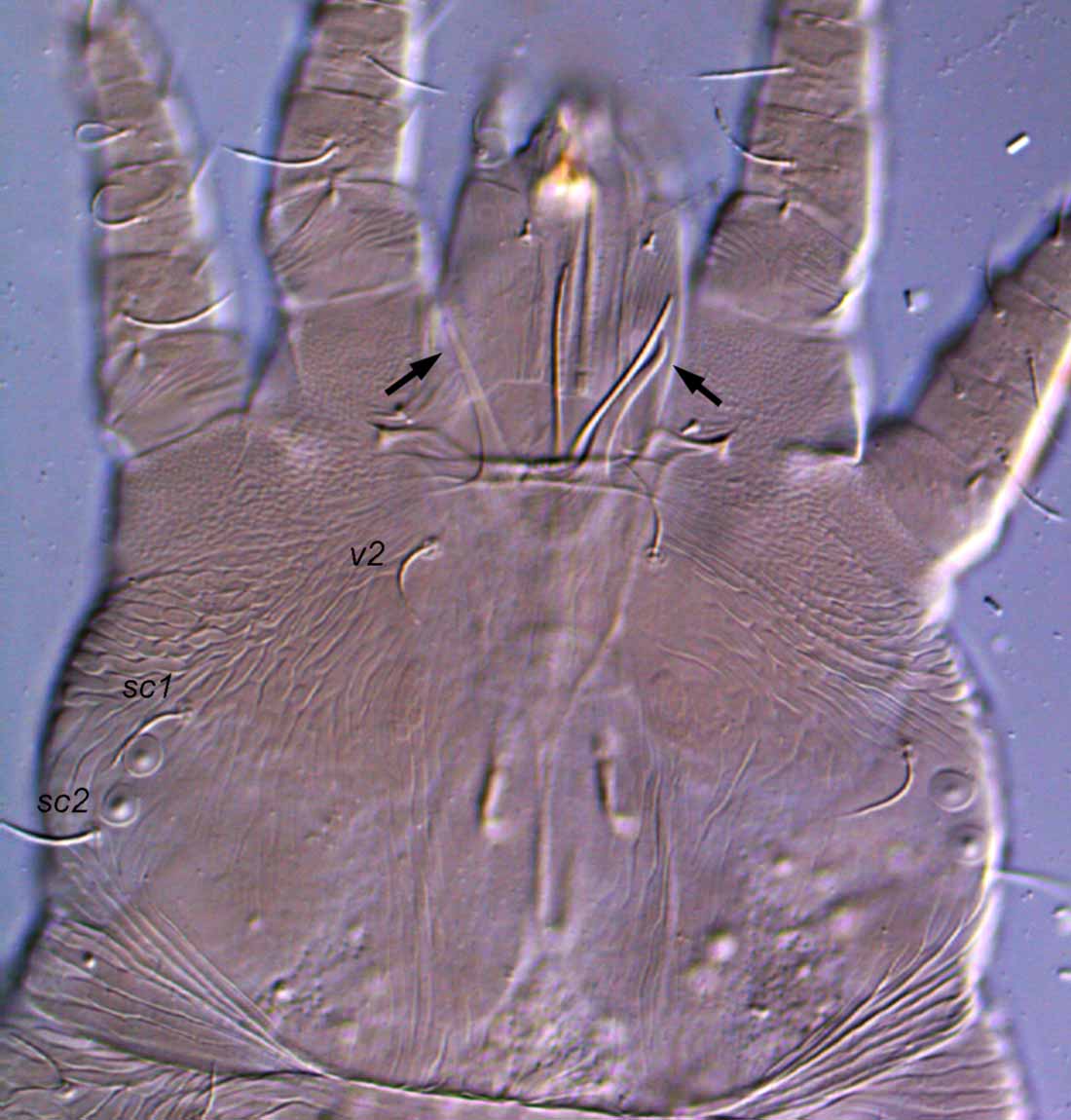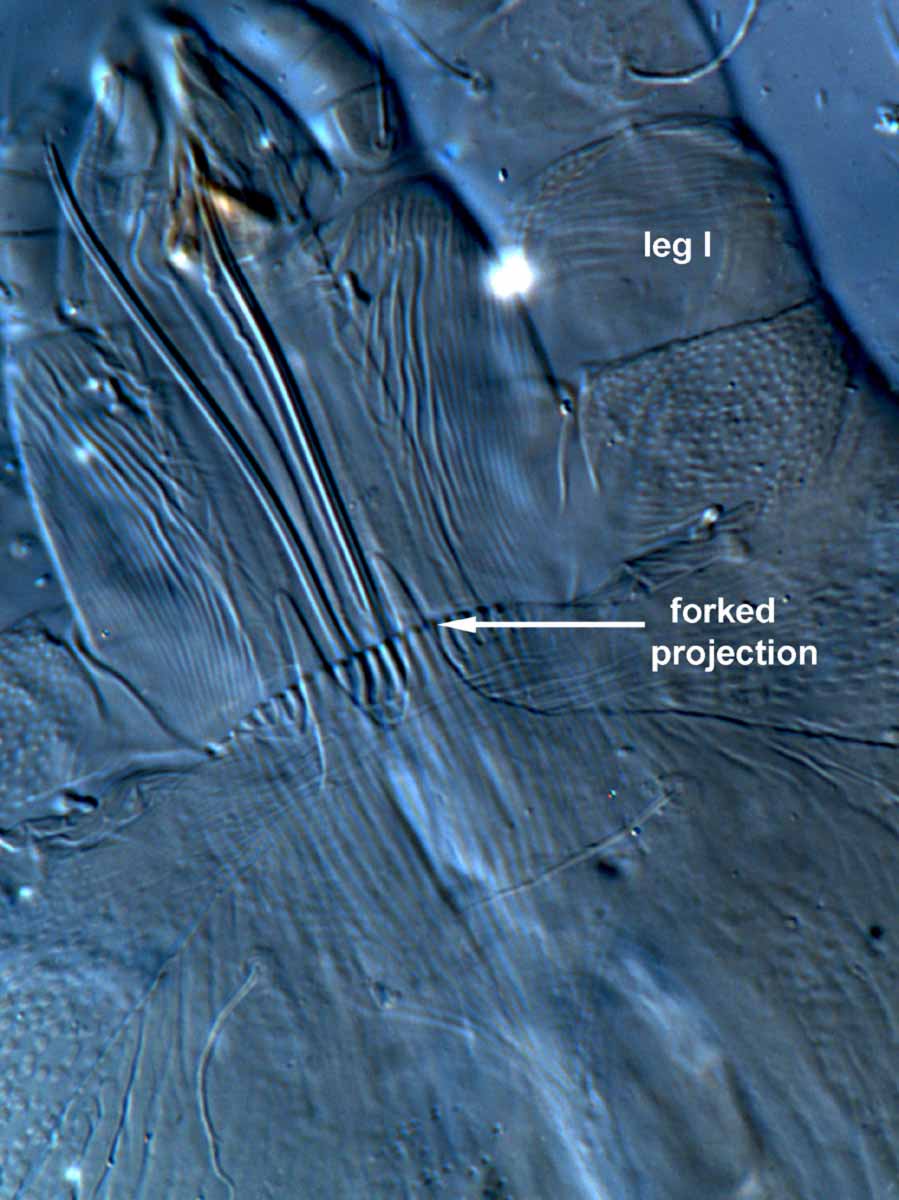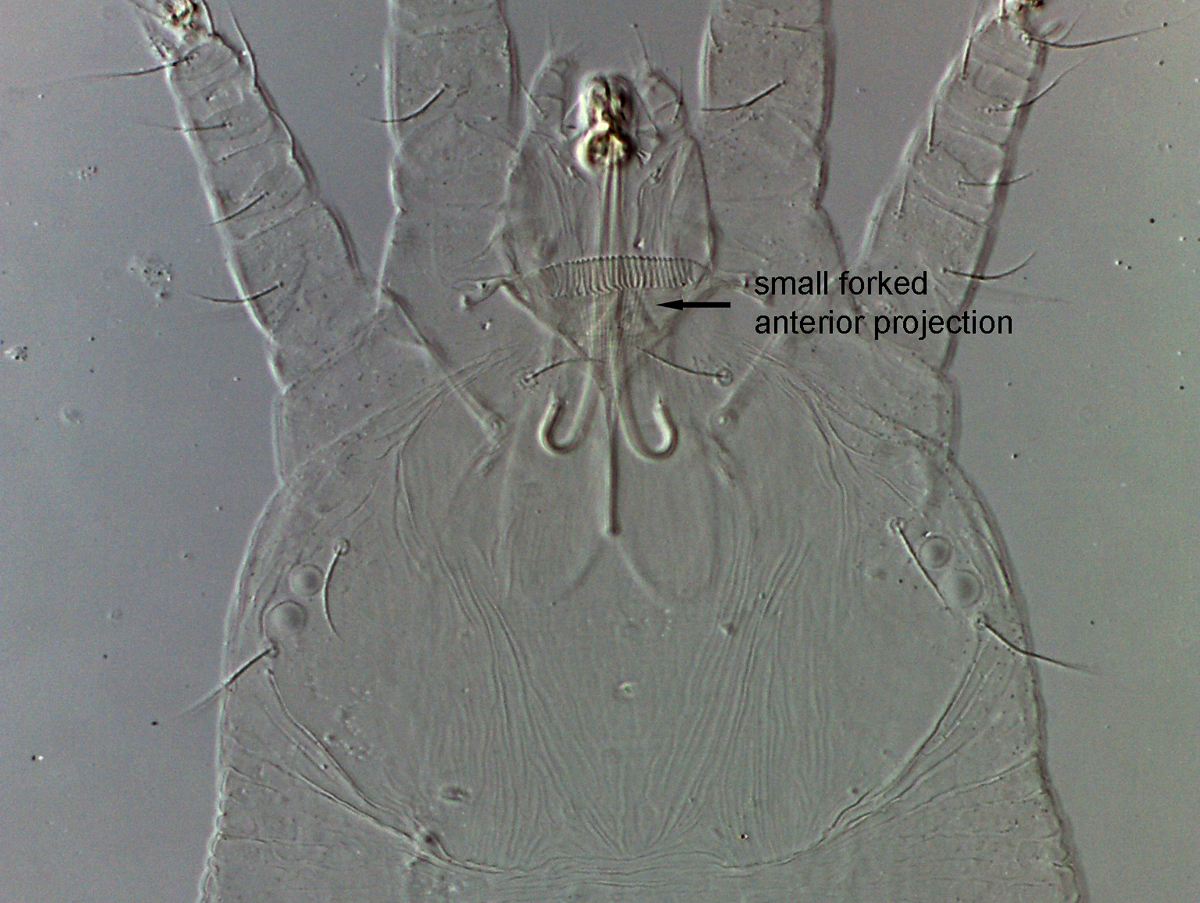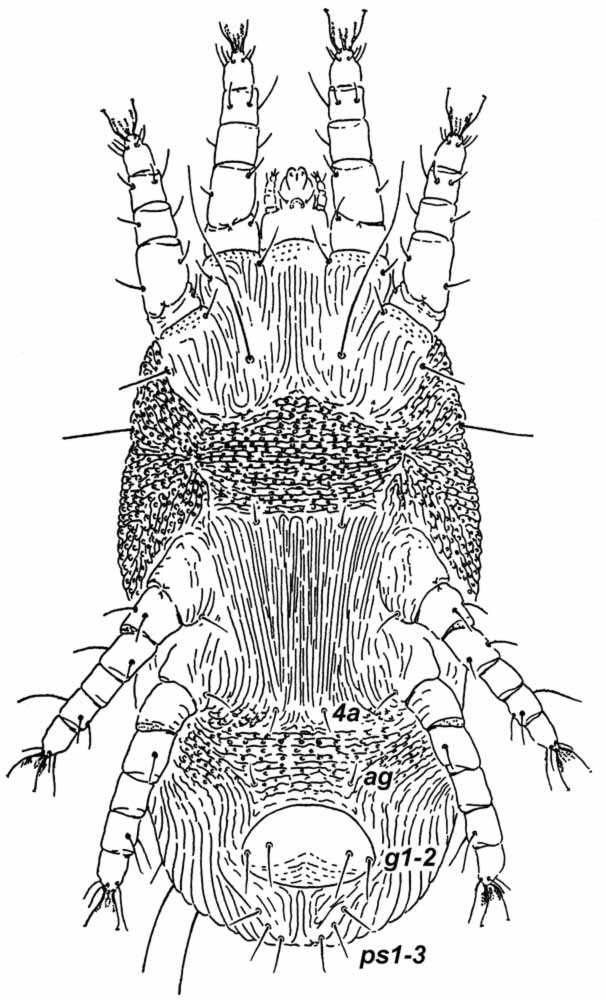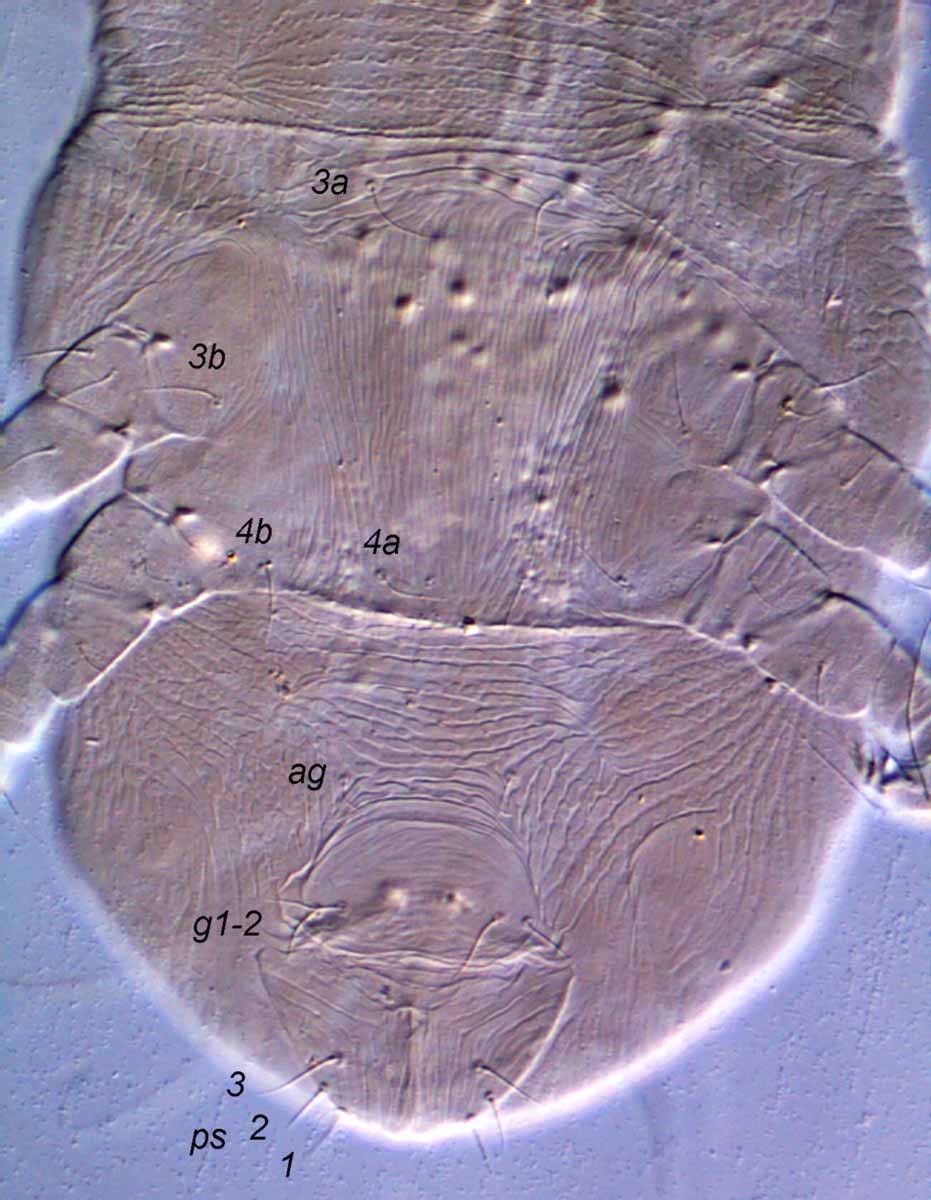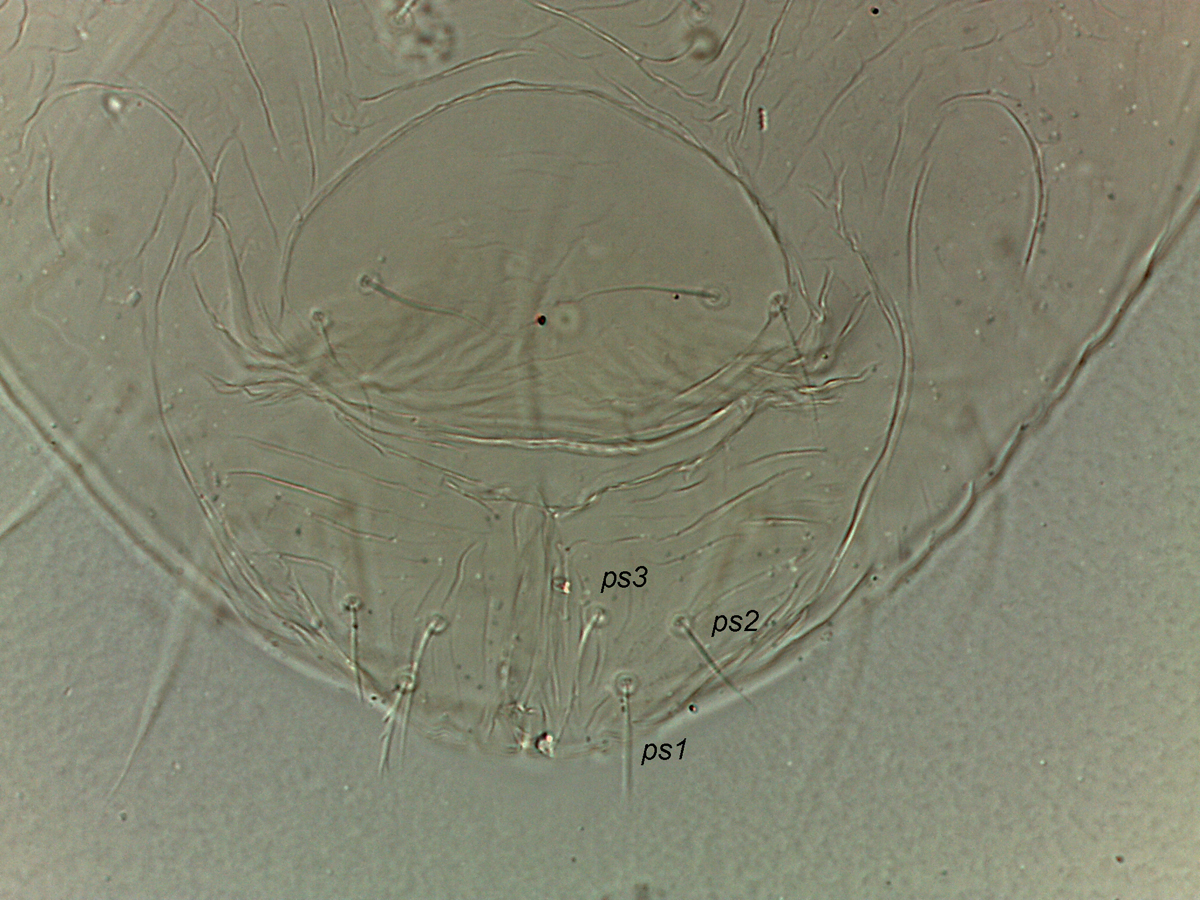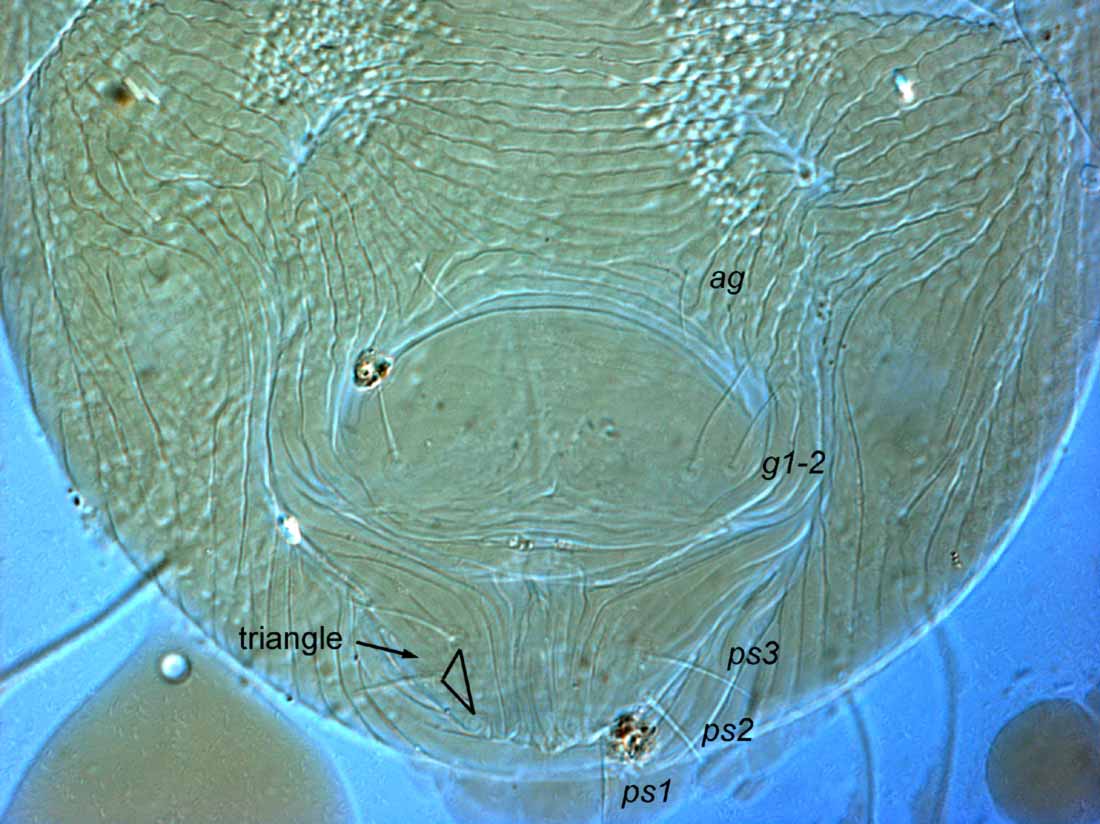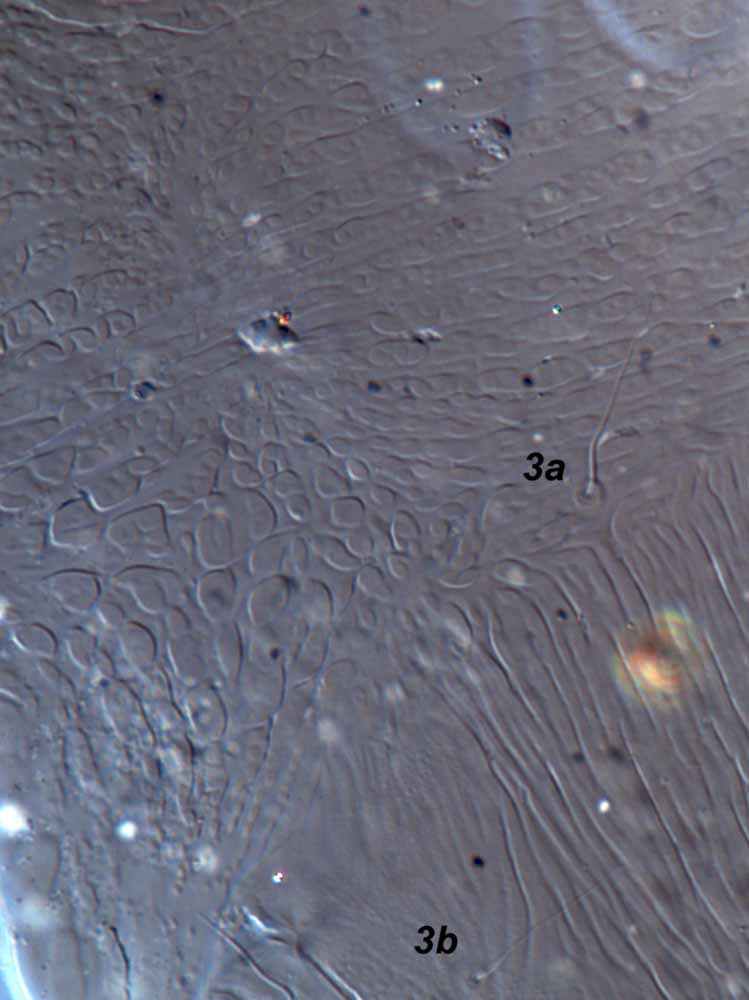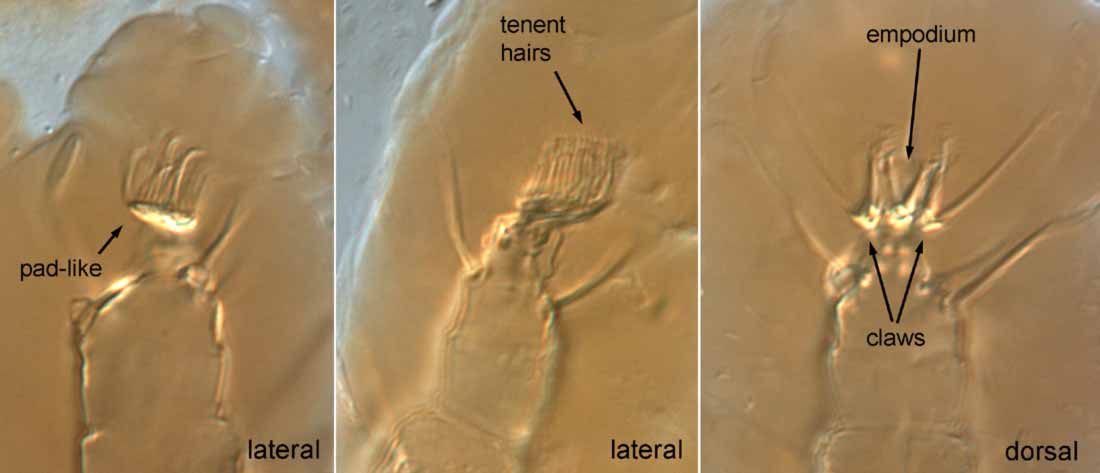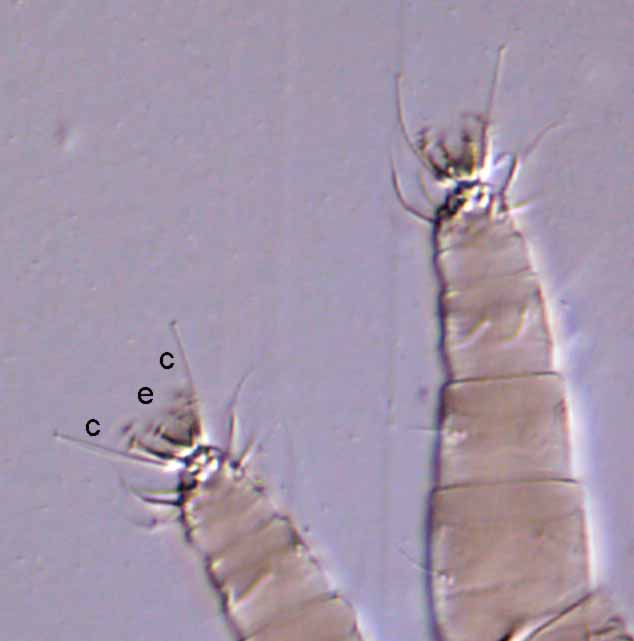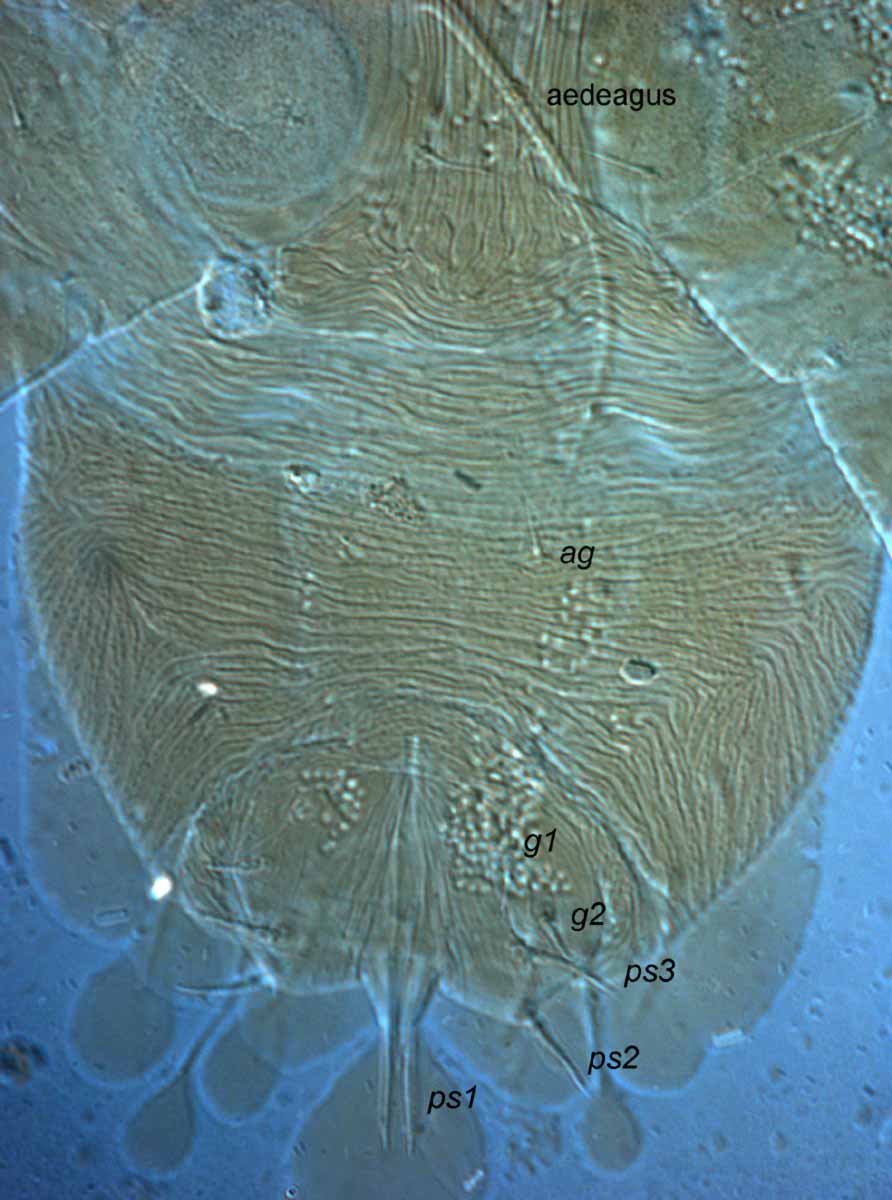Pseudoleptus
|
Fig. 1. Pseudoleptus arechavaletae female dorsum (after Pritchard & Baker 1958). |
|
Fig. 2. Pseudoleptus arechavaletae female dorsum, note mesonotal shields. |
|
Fig. 3. Pseudoleptus sp. female dorsum. |
|
Fig. 4. Pseudoleptus arechavaletae female posterior dorsum (type). |
|
Fig. 5. Pseudoleptus arechavaletae female dorsum (type). |
|
Fig. 6. Pseudoleptus arechavaletae female anterior prodorsum (type). |
|
Fig. 7. Pseudoleptus sp. female anterior prodorsum. |
|
Fig. 8. Pseudoleptus tridens female anterior prodorsum. |
|
Fig. 9. Pseudoleptus sp. female prodorsum, indicating small anterior projection. |
|
Fig. 10. Pseudoleptus arechavaletae female venter (after Pritchard & Baker 1958). |
|
Fig. 11. Pseudoleptus sp. female venter. |
|
Fig. 12. Pseudoleptus sp. female posterior venter, indicating ps1-3 inserted in triangle pattern. |
|
Fig. 13. Pseudoleptus arechavaletae female venter (type). |
|
Fig. 14. Pseudoleptus panicum female venter, with detail of cuticular pattern (type). |
|
Fig. 15. Aegyptobia nomus female claws and empodium (type). |
|
Fig. 16. Pseudoleptus sp. female tarsus I and II. |
|
Fig. 17. Pseudoleptus tridens female prodorsum, detail of cuticular pattern (type). |
|
Fig. 18. Pseudoleptus arechavaletae male posterior venter (type). |
Key characters
- full complement of dorsal setae or f2 absent (Figs. 1-4)
- h2
not greatly elongate (Figs. 1-4) - pair of mesonotal shields usually present between c-setae and d-setae (Figs. 2, 3, 5)
- anterior margin of prodorsum with forked projection, prongs straight or curving laterally (Figs. 6-8); projections are sometimes quite short and difficult to see (Fig. 9)
- ventral, genital and anal plates not developed, membranous (Figs. 10-12)
- 3 pairs ps setae arranged in a triangle pattern (Figs. 12, 13)
- 3-5 segmented palps, most commonly 4-5 segmented
- distinct pebble-like pattern on ventral cuticle with longitudinal striae betweens legs III-IV (Fig. 14)
- both claws and empodia are pad-like (with tenent hairs) (Figs. 15, 16)
- prodorsum often striate (Figs. 9, 17)
- males with modified ps1 setae (Fig. 18)
Similar taxa
Aegyptobia - there are no consistent differences present that can be used to separate species Pseudoleptus from grass-associated species of Aegyptobia in the macswaini species group. Both have an acutely pointed forked projection on the anterior margin of the prodorsum and pad-like claws and empodium. Aegyptobia has 5 segmented palps and ps1-3 arranged in a longitudinal line along median margin of anal plates (except macswaini group have ps1-3 arranged in a weak triangle).
Number of species
over 10
Authority
Bruyant
Distribution
Mostly from the Nearctic (5 spp.) and Western Palearctic (2 spp.) regions.
Countries include: Pakistan, South Africa, Turkey, Ukraine, Uruguay, USA
Hosts
Poaceae

